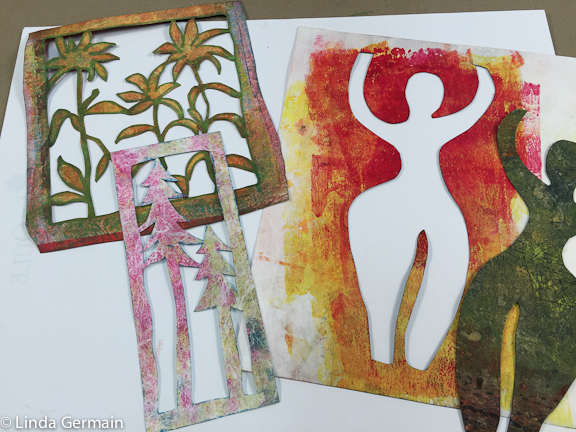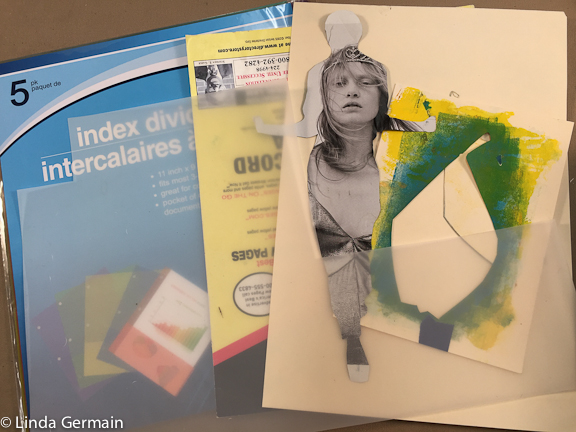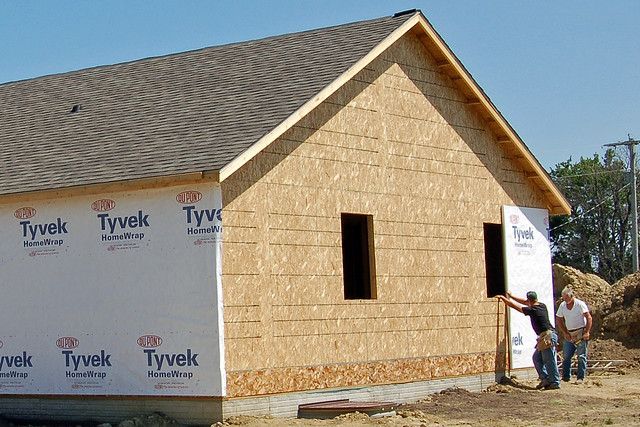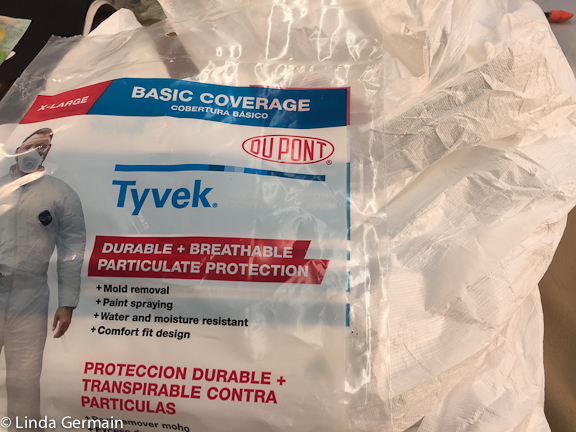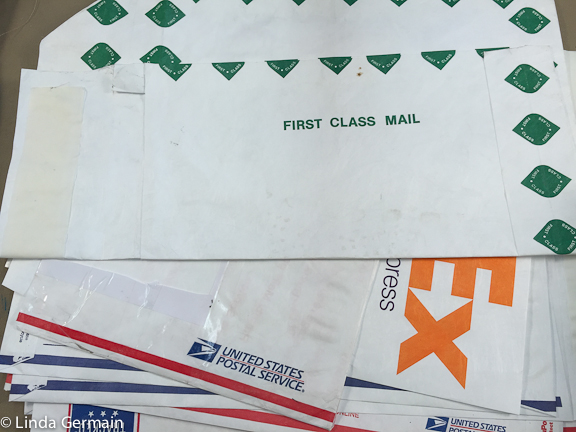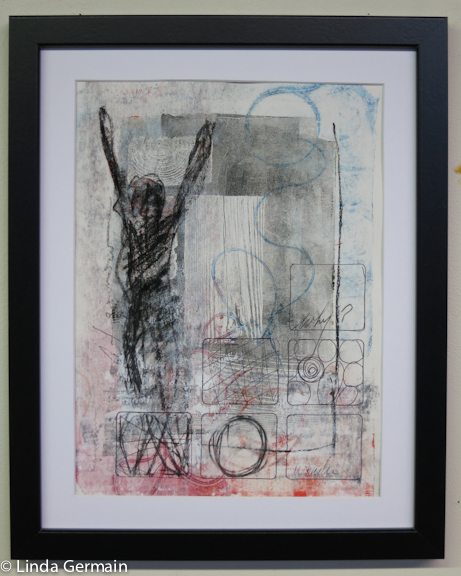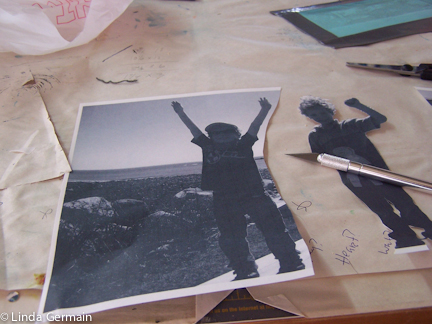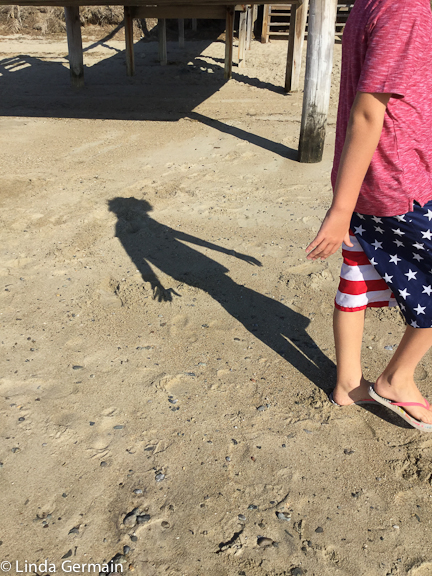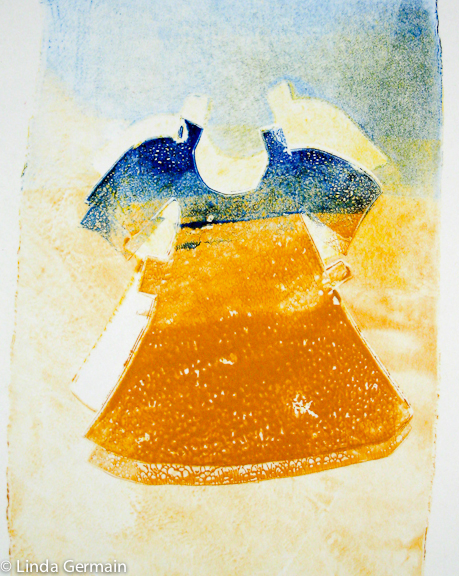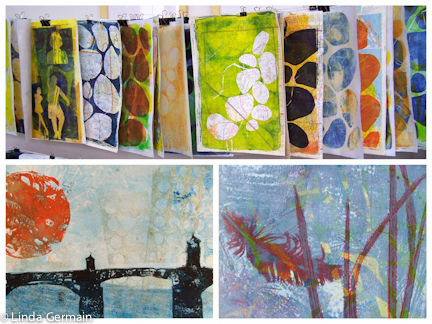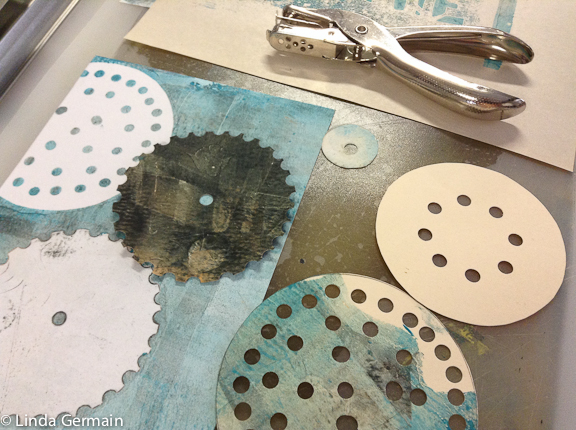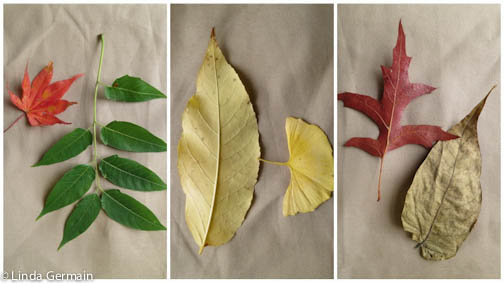More about Tyvek® for stencils
First, though I love Tyvek® for making stencils, I have to say that I made stencils for ten years, before I found the beauty of strong and easy to cut Tyvek®.
So you can make stencils from:
- drawing paper
- coated magazine covers
- Yupo paper
- Plastic file folders
- reinforced envelopes
- Mylar and more
Don’t let your lack of access to Tyvek® stop you from making your own unique stencils.
Here’s a little more about Tyvek®.
photo by SAMDOGS
There are many variations of Tyvek®. There are two main divisions paper-like and fabric-like forms. The paper-like form is stiffer and the fabric-like is soft and scrunchy.
The paper-like stuff is better for stencils because it holds it’s shape. But you can use the softer version to make stencils.
Also the texture of the Tyvek® varies, some times this texture is transferred to your print.
Since Tyvek® is not sold in small amounts as an art supply we need to be creative in finding it.
I spoke to a representative at Material Concepts yesterday about the availability of smaller rolls. The excess inventory is changeable. So you can call and ask if they have any small rolls in stock.
I am waiting to receive my JAM paper from Staples – that may be a reasonable amount for $25. You can also find JAM Tyvek® paper at – JamPaper.com and on Amazon.com
Purchased envelopes or recycled envelopes from the USPS is very affordable and a great place to start to try out making stencils from Tyvek®. These envelopes are the stiffer paper like version.
You can get a fabric-like version at the hardware store in the form of protective suit. This is thin, textured and wrinkly but it it still very strong.
My best advice to find recycled Tyvek® is to look to industries that use it and ask if you can have the stuff that they throw away.
Two users that I can think of:
- local builders
- carpet sellers
Here is a quick video to show you differences in types of Tyvek®.
Look FUN!!!
Join us in a printmaking workshop. Check the current schedule.
More about Tyvek® for stencils Read More »
